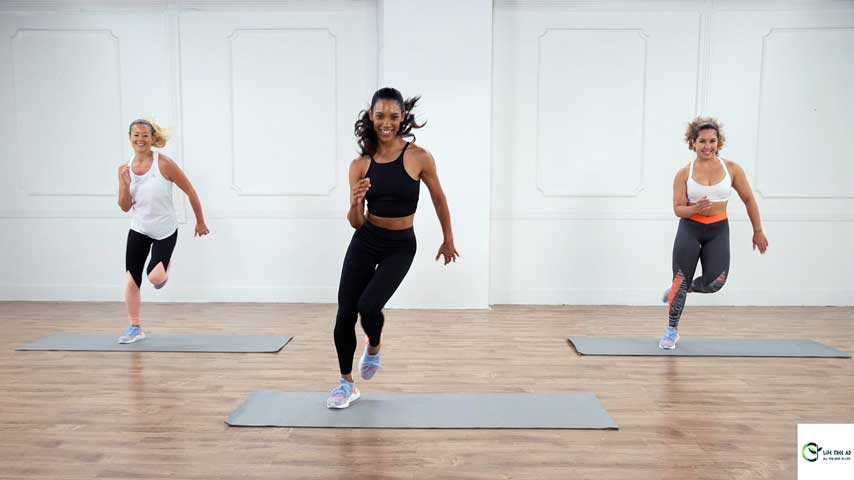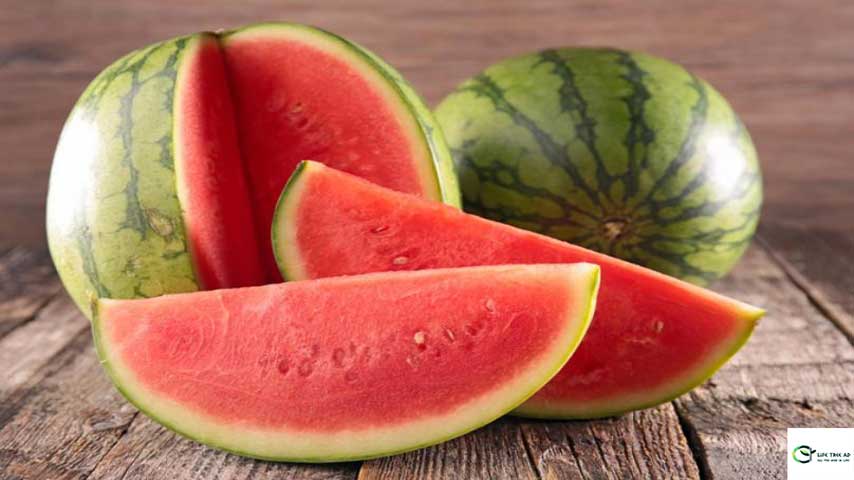Thursday, July 30, 2020
Morning or evening exercise: Which is more effective?
Wednesday, July 29, 2020
What happens in the body when you stop drinking coffee?
Tuesday, July 28, 2020
The most common "weight loss tricks" that make you fat
Monday, July 27, 2020
Four delicious drinks that melt belly fat
Saturday, July 25, 2020
What happens to the body if we do not drink enough water?
Friday, July 24, 2020
Fruits that will help you lose weight
Thursday, July 23, 2020
How To Eat To Lose Fat Forever?
Wednesday, July 22, 2020
10-min Easy exercises for sexy back, arms, and chest
Tuesday, July 21, 2020
HIIT training in your home - just 15 minutes a day makes a big difference
Monday, July 20, 2020
5 Steps to Safe Return to the Gym During a Corona Pandemic
Sunday, July 19, 2020
7 Ways Summer Beats Winter For Nailing Your Weight-Loss Resolutions
Saturday, July 18, 2020
Right signs that you are consuming too much sugar in the body
Start the day with morning cardio at home
Friday, July 17, 2020
One meal a day to melt belly fat
Thursday, July 16, 2020
Why is it so hard to motivate ourselves to exercise?
Wednesday, July 15, 2020
Egg diet Can you lose 4.5 pounds in 7 days?
Monday, July 13, 2020
A few reasons why you should eat figs every day
- 100 g of fresh figs contain:
- 80 calories
- 1.3 g of protein
- 0.3 g of fat
- 20.3 g of carbohydrates
- 2.2 g of fiber
- 100 g of dried figs contain:
- 249 calories
- 3.3 g of protein
- 0.9 g of fat
- 69 g of carbohydrates
- 5.6 g of fiber
Sunday, July 12, 2020
10-minute light exercises for a tight butt
Friday, July 10, 2020
5 Tips For Easing Back Into Gym Workouts
Thursday, July 9, 2020
Fitness tips for beginners: How to prepare for the first workout?
Wednesday, July 8, 2020
Three exercises that will help you reduce back pain
Tuesday, July 7, 2020
Why should you eat peaches every day?
Monday, July 6, 2020
Eight mistakes that don't increase your muscle mass
Sunday, July 5, 2020
Here are some reasons why you should eat watermelon every day
- Watermelon contains 92% water, 6% sugar, and 2% fiber.
- From 150 g of watermelon 5% contains vitamin A, important for skin health.
- 20% of the daily requirement for vitamin C is met with 180 g of watermelon.
- Watermelon contains most of the amino acid citrulline, which relaxes and protects blood vessels, so it is important for erectile function - 210 mg per 100 watermelons.
- Watermelon seeds can be eaten, fried in China, and eaten as snacks. They are a healthy ingredient that can be used to treat kidney problems.
- The heaviest watermelon is measured in Tennessee, weighing 159 kg
- Although it originates from Africa, the first record for watermelon is 5,000 years old and is from Egypt where the watermelon was valued so much that it was placed in the tombs of kings.
Saturday, July 4, 2020
What should you eat before and after exercise?
Friday, July 3, 2020
Easy warm-up exercises for the whole body
Thursday, July 2, 2020
Two Free-Weight Routines for you and your body
Short answer—more than you might think. In fact, the variations are endless.
The two total-body workouts below make it possible for you to target the main muscles of your body while using minimal equipment. These workouts can be done for a total of two to four times a week (two times each), but be sure to take at least one day off between workouts.
These workouts follow the Reps in Reserve (RIR) concept. With RIR, you perform a specific number of repetitions (reps) while leaving some in reserve—or “left in the tank”—before ending the set. This format helps you determine the effort you put into each exercise, which is helpful if you have just one set of fixed-weight dumbbells.
Aim for an RIR of 4 the first week you perform these workouts. This means you should use an amount of weight that allows you to finish the set feeling like you could have done 4 more repetitions. On week 2, aim for an RIR of 3; on week 3, aim for an RIR of 2; and on week 4, aim for an RIR of 1. This sequence will help you progress each week and increase the intensity of your effort.
The recommended number of repetitions is given in parentheses after each exercise. This range is the ideal number of repetitions you should aim to work within for each exercise when considering your RIR, but this is completely up to you and your ability. Be aware that the upper limit of each listed rep range (20-30 reps) is included to reduce your chances of exhaustion and overtraining.
Before you get started with either of these workouts, warm-up for at least 3-5 minutes on your favorite cardio machine (if available) or with a walk or jog outside, if possible. If you don’t have access to any cardio equipment, perform one minute of jogging in place or two to three sets of the following: five inchworms, five body-weight squats (to a depth that is comfortable to you) and five body-weight deadlifts.
“The Dirty Seven” Full-body Workout (Days 1 and 5)
In 20 minutes, complete as many rounds as possible of the
following movements:
- Dumbbell front squats (rep range of 10-20)
- Diagonal raise (5-20 reps per arm)
- Dumbbell swing (10-20 reps; while this exercise is traditionally done with kettlebells, it can be done with a dumbbell instead)
- Lateral lunges with dumbbells (5-20 reps per side)
- Dumbbell squat to overhead press (5-20 reps)
- Reverse crunch (10-20 reps)
- Elevated glute bridge with dumbbells (10-20 reps)
- Rest for 30-60 seconds before repeating the round.
- Full-body Workout (Days 3 and 7)
- In eight minutes, complete as many rounds as possible of the following:
- Dumbbell single-leg single-arm Romanian deadlifts (8-20 reps per leg)
- Dumbbell front raises, alternating (8-20 reps per arm)
- Dumbbell chest presses, alternating (8-20 reps per side)
- Rest for 30-60 seconds before repeating the round.
At the end of the eight minutes, rest two minutes and then complete as many rounds as possible in eight minutes of the following:
- Renegade rows (5-20 reps per arm)
- Dumbbell lateral raises (8-20 reps)
- Seated shoulder presses, alternating (8-20 reps per arm)
- Rest for 30-60 seconds before repeating the round.
When you have limited time or equipment, it’s helpful to remember that you don’t need to spend hours per week training to maintain your overall strength and fitness—all you need is some sort of tension on your muscles. Your body cannot tell the difference between the muscle tension it experiences from bands, barbells or dumbbells. The point is to keep moving and to maintain a fitness regimen, even if you only have a set of dumbbells.
Give these workouts a try this week and stay consistent with them for two to four weeks to see how your body responds. As you progress, aim for the lower RIR to really push yourself. After four weeks of following these workouts, go back to a RIR of 4 and increase the reps to help you progress further.
Maybe you want to read about 25 Reasons to Love Walking For Exercise.
Wednesday, July 1, 2020
25 Reasons to Love Walking For Exercise
Kale Egg-White Quiche With Sweet Potato Crust
Active time: 25 minutes Total time: 1 hour
Quiche is divine, but the crust adds loads of carbs, fat, and prep time. Skip the flour and use sliced sweet potatoes to line the pie pan for a slightly sweet, tender vessel for the savory egg and kale filling.
RD tip: The sweet potato crust adds some fiber and vitamin A, plus it makes you feel fuller than regular pie crust.
Kale Egg-White Quiche With Sweet Potato Crust
Ingredients
- 1 5-inch (13cm) sweet potato, thinly sliced in rounds
- 2 teaspoons olive oil
- 1 cup (160g) onion, chopped
- 1 tablespoon fresh thyme
- 4 cups (268g) packed kale, chopped
- 8 large egg whites
- 2 large eggs
- 1/4 cup (25g) shredded Parmesan cheese
- 1/2 teaspoon freshly ground black pepper
Directions
Preheat the oven to 375ºF (190ºC). Spritz a 9-inch, deep-dish pie pan with oil, then place a single layer of sliced sweet potatoes in the pan, lining it as well as you can. There will be overlaps and gaps. Place a square of foil on top of the sweet potato and press it on the surface of the slices, wrapping the foil around the rim of the pan. Bake for 20 minutes, until the slices are tender when pierced with a paring knife. Gently press down any slices that are not lying flat, then remove the foil. Let cool on a rack.
In a large saute pan, drizzle the olive oil and place over medium-high heat. Add the onion and thyme and stir, and reduce the heat when it starts to sizzle. Cook for about 5 minutes, until the onion is softened. Add the kale and stir for 4–5 minutes, until the kale is softened and shrunken. Let cool.
In a medium bowl, whisk the egg whites and eggs, and when well-mixed, whisk in the Parmesan and pepper. Add the cooled kale, folding the mixture together with a spatula. Scrape into the sweet potato crust and smooth the top.
Bake for about 35 minutes, until a paring knife inserted in the center of the quiche comes out dry. Let cool on a rack for 5 minutes before cutting into six wedges.
Serves: 6 | Serving Size: 1/6 quiche
Nutrition (per serving): Calories: 152; Total Fat: 6g; Saturated Fat: 2g; Monounsaturated Fat: 2g; Cholesterol: 126mg; Sodium: 207mg; Carbohydrate: 12g; Dietary Fiber: 3g; Sugar: 3g; Protein: 13g
Maybe you want to read about Signs that you are not drinking enough water.
Harmful and pointless The worst nutrition tips
Many diet tips can hurt your health, especially when it comes to comments from unprofessional people. Experts on proper nutrition and exerci...

-
Pamela Reif is here for you again, this time with a new video showing light upper body exercises. You can do the exercises at home, and it i...
-
Many diet tips can hurt your health, especially when it comes to comments from unprofessional people. Experts on proper nutrition and exerci...
-
The use of spices and herbs to treat certain diseases is becoming more common. Normally, these folk remedies can not replace the therapy pre...































